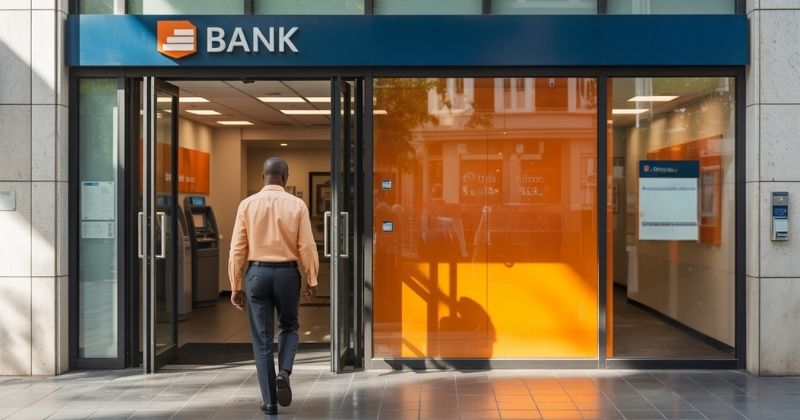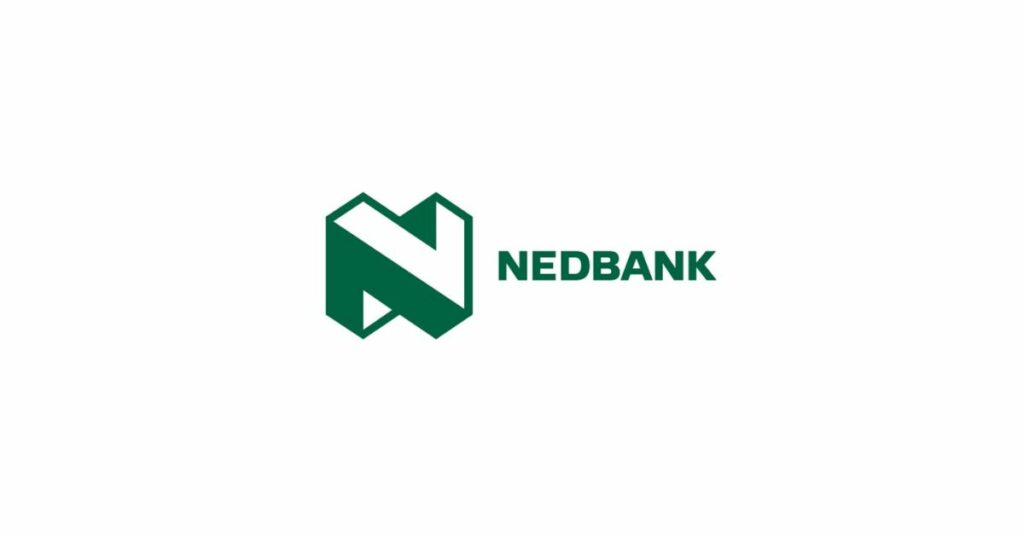
The South African retail banking sector continues to reduce its physical footprint across the country, responding to an increasing shift by customers towards digital and online banking channels. This ongoing trend reflects broader changes in consumer behaviour and operational strategies aimed at improving efficiency and cutting costs. This shift comes at a time when many South Africans are still grappling with limited internet access and financial inclusion remains a key concern for regulators.
Key Takeaways
- Legacy Banks Are Downsizing: Major South African banks, including Standard Bank, Absa, and Nedbank, are actively reducing their branch networks and physical footprints. This reflects a strategic pivot towards digital banking and cost efficiency.
- Capitec and FirstRand Expand: Unlike their counterparts, Capitec and FirstRand have added new branches, with Capitec focusing on strategic locations to serve the informal market. This signals differing priorities among banks based on customer base and growth opportunities.
- Kiosks Replace Traditional Branches: Standard Bank and others are substituting full-service branches with kiosks and other low-cost service points, helping reduce overheads while maintaining accessibility. The emphasis is on leaner infrastructure without abandoning physical customer service entirely.
About Arcadia Finance
Secure funding fast with Arcadia Finance. Skip the application fees and compare offers from 19 top-tier lenders, all compliant with South Africa’s National Credit Regulator. Our hassle-free process connects you with the right loan quickly and confidently.
Net Branch Reductions Across Major Banks
An analysis of year-end 2024 banking data reveals that South Africa’s five largest traditional banks experienced a net reduction in branch numbers, with nine fewer branches compared to the previous year. Among these, Standard Bank led the contraction by significantly scaling back its physical operations. This signals a growing divergence in how legacy banks view the importance of in-person services versus emerging financial technology solutions.
Even in instances where banks have not closed branches outright, many have chosen to reduce their overall operational space. This has involved downsizing the physical area of existing branches, effectively limiting the square footage used to service customers while retaining certain locations. In some malls and retail centres, this has translated into smaller counters with fewer consultants on-site, relying more on digital self-service touchpoints.
This assessment draws on the published financial statements for the 2024 financial year from Standard Bank, Absa, Nedbank, and Capitec. As FirstRand had only released interim results, data from its half-year reporting was included. All figures, with the exception of Capitec’s, are based on numbers recorded at the end of December 2024. Capitec’s data was taken as of February 2025.
Thinking of the big four or even the dozen that shape our financial world? Check out our Banks in South Africa: A Complete Guide to see how each player stacks up, from branch networks to digital offerings.

Branch Numbers Decline Marginally
The combined total number of branches across the major banks fell slightly from 3,299 in December 2023 to 3,290 by December 2024. Although a reduction of just nine locations may seem relatively minor, a closer look reveals that only two institutions – FirstRand and Capitec – expanded their networks, while the other three contracted. This contraction trend is expected to continue in 2025, particularly as banks pursue leaner operations and cost-to-income improvements.
Capitec added 14 branches and FirstRand increased its footprint by 9 branches during the period. These gains, however, were offset by closures at Nedbank, which shut four branches, Absa, which closed two, and Standard Bank, which reduced its network by 26 service points. The pace and scale of Standard Bank’s closures suggest a deliberate reallocation of resources away from traditional infrastructure and into mobile, app-based solutions.
Standard Bank: A Strategic Shift to Digital
Standard Bank has actively reduced its number of physical branches as part of a broader strategy to move customers towards digital banking. The bank has confirmed that its physical presence has been deliberately scaled down, with a reduction of 42% in branch footprint since 2017. This represents one of the most aggressive branch rationalisation programmes among South African banks to date.
Although this shift has reduced the opportunity for face-to-face customer interaction, it has translated into operational savings totalling R768 million. At the same time, Standard Bank has increased the use of alternative service points by investing in more affordable kiosk installations. These lower-cost kiosks are often positioned in high-traffic areas such as shopping centres and community halls, designed to serve clients who still need occasional physical access.
It is important to note that Standard Bank’s reported branch numbers include different types of service outlets. In 2023, its total of 652 “branches” was comprised of 485 traditional branches and 167 kiosks. By the end of 2024, the number of traditional branches increased by one to 486, but 27 kiosks were removed, leading to a net reduction of 26 overall service points. This recalibration shows a clear shift towards prioritising efficiency over coverage, with a focus on cost-per-contact rather than sheer presence.
Balancing Efficiency with Customer Needs
Standard Bank has stated that it remains focused on optimising its infrastructure. This includes efforts to reduce both branch sizes and the number of ATMs while expanding access points in other forms. The bank acknowledges, however, that many clients still require access to physical cash services and that complex issues are often best addressed through in-person meetings. This balancing act between cost-cutting and client service highlights a tension many banks are now facing as they re-engineer the customer experience.

Nedbank Also Reducing Branch Space
Nedbank followed a similar pattern, reducing its number of branches by four during 2024. Additionally, it scaled back the total area occupied by its branches to 118,000 square metres. This marks a significant decline of 72,000 square metres since 2020. The bank has observed a clear link between reduced branch infrastructure and increased use of digital banking options. Nedbank has further hinted that branch floor space optimisation is a key part of its long-term cost containment strategy.
Digital Banking Trends Expected to Continue
Nedbank expects this trend to accelerate in future, predicting a further decline in manual in-branch transactions and ATM usage as more customers adopt online and mobile banking solutions. This is expected to inform the bank’s future infrastructure planning. To support this transition, the bank has invested heavily in mobile platforms, including biometric verification and integrated chat support.
Branch closures don’t mean loans are out of reach. Learn how to get a loan from the bank without ever stepping foot inside. Many South African banks have refined their digital offerings, making the borrowing process more efficient for tech-savvy users.
Capitec Expands to Strengthen Customer Access
Contrary to the broader sector trend, Capitec has continued to grow its branch network, aligning with its strategy to serve customers in high-demand locations. The group sees physical branches as a way to maintain strong customer service and attract new clients, particularly in under-served markets. This approach is aimed at reinforcing the bank’s brand as accessible, customer-friendly, and present where competitors may be retreating.
Capitec’s Focus on Product Expansion
Capitec highlights that self-service terminals at branches handle most transactions, while staff play a key role in introducing new products to customers. This approach supports the bank’s growth into sectors such as insurance, where it sees an opportunity to reach clients who have not previously been catered for through conventional banking. This expansion is not just about geography but about tapping into new revenue channels and diversifying product offerings.
Targeting the Informal Economy
Capitec has identified significant potential for growth within South Africa’s informal economy. The bank believes that many individuals in this sector lack access to services such as credit, insurance, value-added services, and financial education. Capitec plans to meet this demand through its existing branch network, which it believes is well-placed in strategic areas. With millions of South Africans earning outside of the formal job market, Capitec’s focus could give it a competitive edge in an underserved demographic.

Summary of Branch Numbers Across Banks
Below is the updated branch data for South Africa’s major banks:
| Bank | Branches Financial Year 23 | Branches Financial Year 24 | Change |
|---|---|---|---|
| Capitec | 866 | 880 | +14 |
| Standard Bank (SA) | 652 | 626 | -26 |
| FirstRand (FNB) | 616 | 625 | +9 |
| Absa | 618 | 616 | -2 |
| Nedbank | 547 | 543 | -4 |
| Total | 3,299 | 3,290 | -9 |
Conclusion
South Africa’s banking sector is undergoing a significant shift, with a clear divide between banks cutting costs through digital migration and others growing physical networks to tap into underserved markets. While the net number of branches dropped only slightly, the underlying strategies reveal a broader transformation in how banks engage with customers. This evolution highlights the challenge of balancing digital innovation with the need to maintain physical access, especially for cash-based and rural customers.
Fast, uncomplicated, and trustworthy loan comparisons
At Arcadia Finance, you can compare loan offers from multiple lenders with no obligation and free of charge. Get a clear overview of your options and choose the best deal for you.
Fill out our form today to easily compare interest rates from 19 banks and find the right loan for you.


